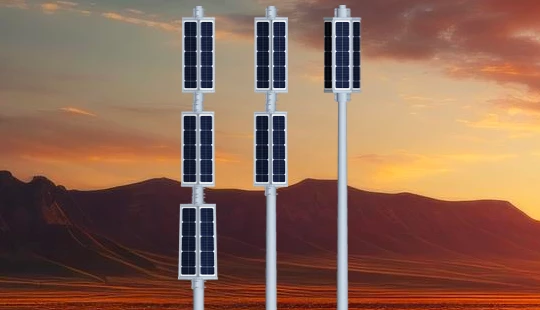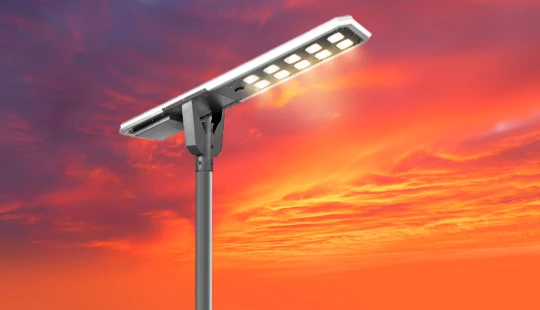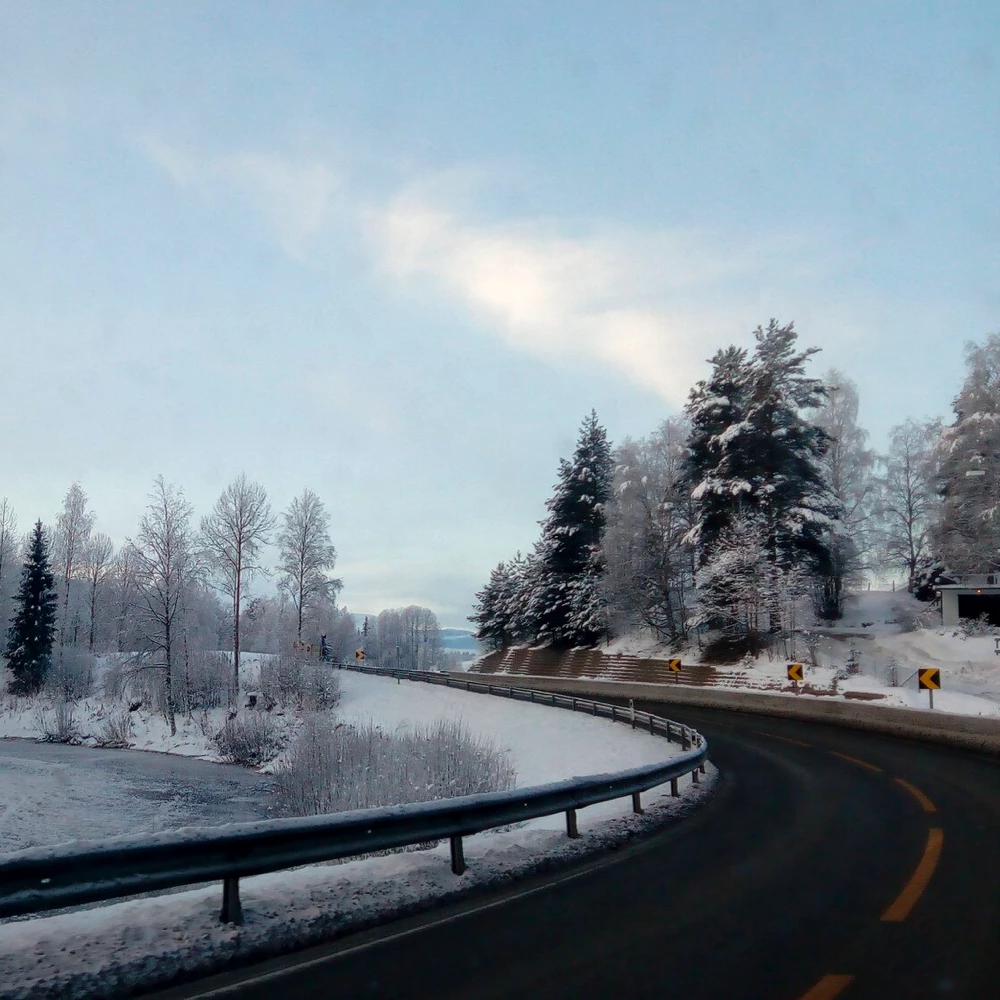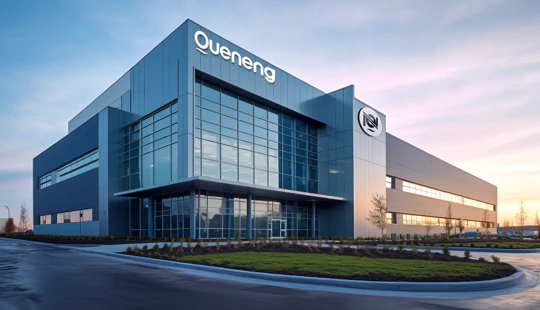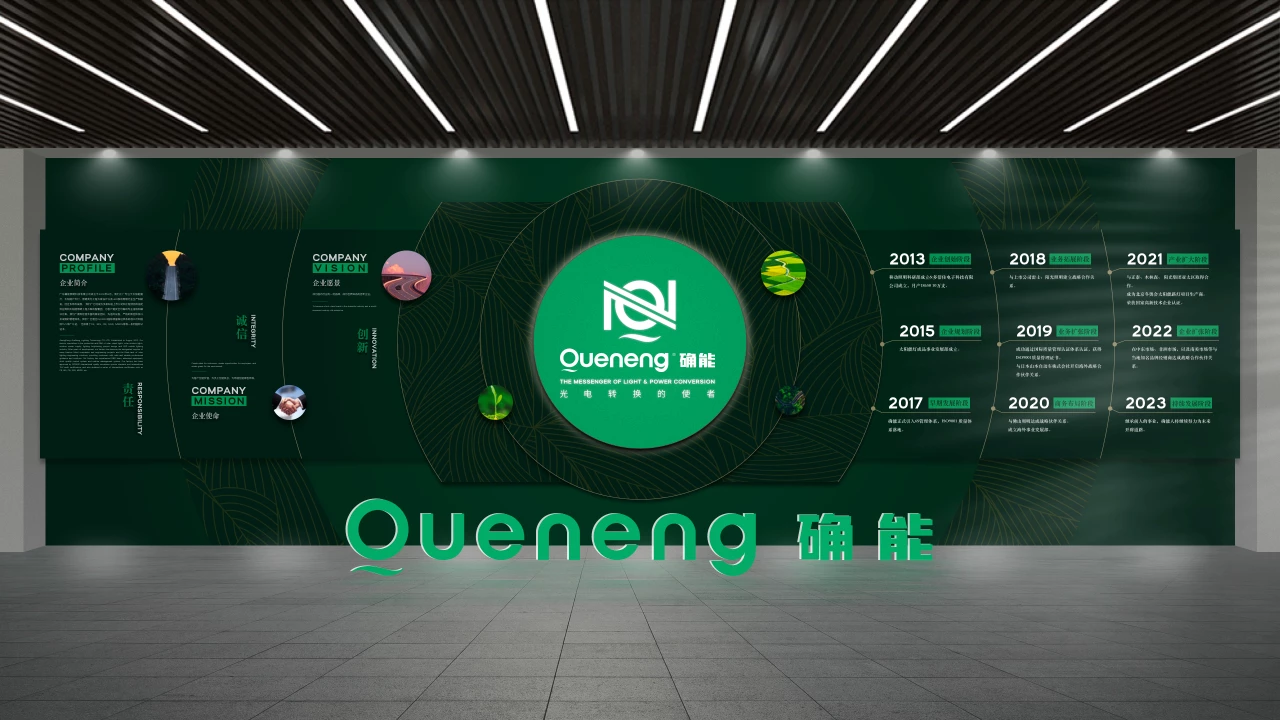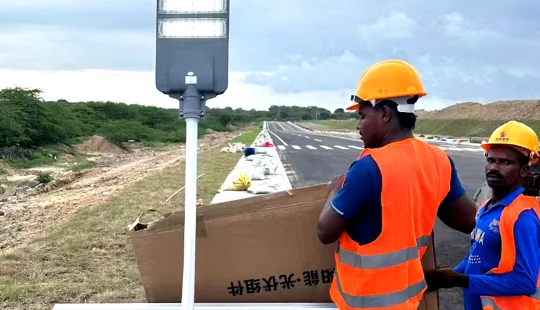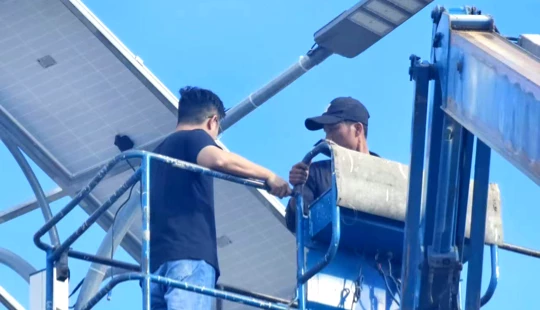OEM solar lighting for energy-saving retrofits | Quenenglighting Expert Guide
Maximizing Efficiency: Your Guide to OEM Solar Lighting for Energy-Saving Retrofits
As organizations increasingly prioritize sustainability and cost reduction, upgrading existing lighting infrastructure with energy-efficient solutions has become a top priority. OEM (Original Equipment Manufacturer) solar lighting for energy-saving retrofits presents a compelling opportunity, offering autonomy from the grid, significant operational savings, and a reduced carbon footprint. But what are the critical questions users ponder when considering such an investment? Based on extensive industry inquiries and common concerns, we've identified the top 5 questions users ask when exploring OEM solar lighting for retrofits.
What is the typical ROI and energy savings for OEM solar lighting retrofits?
The return on investment (ROI) and energy savings are often the primary drivers for adopting solar lighting. OEM solar lighting systems eliminate electricity consumption for the lighting component entirely, leading to 100% direct energy savings on lighting bills. For commercial and industrial facilities, where lighting can account for 20-40% of electricity consumption, this translates to substantial savings. Typical payback periods for quality OEM solar lighting retrofits range from 3 to 7 years, depending on local electricity rates, project scale, and the specific system configuration. Beyond direct electricity savings, significant cost avoidance comes from eliminating trenching and complex wiring required for traditional grid-tied lighting. For instance, trenching costs can range from $5 to $25 per linear foot, making solar an exceptionally cost-effective option for remote locations or large parking lots where new wiring would be prohibitive. Additionally, some regions offer tax incentives, grants, or rebates for renewable energy installations, further accelerating the ROI.
How do OEM solar lighting systems perform in various weather conditions and what is their expected lifespan?
Modern OEM solar lighting systems are engineered for robust performance across diverse climates. Key components include:
- Solar Panels: High-efficiency monocrystalline silicon solar panels typically have a 20-25 year performance warranty, with an average degradation rate of less than 0.5% per year, ensuring consistent power generation. They perform well even in cloudy conditions, albeit at reduced output.
- Batteries: Lithium Iron Phosphate (LiFePO4) batteries are the industry standard for longevity and safety. They offer 2,000 to 4,000 charge cycles, equating to a lifespan of 5-10 years before significant capacity degradation. Systems are designed with sufficient battery autonomy (typically 2-3 nights of backup power) to ensure continuous operation during extended cloudy periods or winter months.
- LED Luminaires: Modern LED chips (e.g., from Cree, Philips, Osram) boast lifespans of 50,000 to 100,000 operating hours, drastically reducing maintenance and replacement costs compared to traditional lighting.
- Weather Resistance: High-quality OEM systems are built with robust materials (e.g., marine-grade aluminum, tempered glass) and sealed to achieve an Ingress Protection (IP) rating of IP65 or IP66, signifying complete protection against dust and strong jets of water, capable of withstanding heavy rain, snow, and extreme temperatures (typically from -20°C to +50°C).
Can these OEM solar lighting solutions be customized for specific retrofit projects and integrate with existing infrastructure?
Absolutely. OEM solar lighting providers specialize in customization to meet the unique demands of retrofit projects. This includes tailoring:
- Lumen Output & Distribution: Matching required light levels (e.g., 2,000 lumens for pedestrian pathways to 25,000+ lumens for large industrial areas) and precise light distribution patterns (Type II, Type III, Type IV) for optimal illumination and minimal light pollution.
- Pole Integration: Designs can be adapted to mount on existing poles, whether they are historical lampposts, utility poles, or standard commercial poles, reducing the need for new foundations.
- Battery & Solar Panel Sizing: Sizing components specifically for the local solar insolation levels and desired autonomy to guarantee reliable performance year-round.
- Smart Control Systems: Integration with advanced controllers featuring PIR motion sensors, programmable dimming profiles, dusk-to-dawn operation, and even IoT connectivity (e.g., LoRaWAN, Zigbee) for remote monitoring, diagnostics, and management. This allows for dynamic lighting adjustments, further saving energy when areas are unoccupied.
- Aesthetics: Custom finishes, colors, and designs to blend seamlessly with the architectural style of the existing infrastructure or landscape.
What are the installation requirements and ongoing maintenance needs for OEM solar lighting systems?
One of the significant advantages of OEM solar lighting for retrofits is the simplified installation process compared to grid-tied systems. Since no trenching for power lines is required, installation is often quicker and less disruptive. For existing poles, it typically involves securely mounting the integrated solar light unit or separate solar panel and battery box onto the pole, connecting pre-wired components, and ensuring correct orientation of the solar panel. This can often be done by a small team without extensive electrical work, reducing labor costs.
Ongoing maintenance is minimal:
- Solar Panel Cleaning: Periodic cleaning (annually or semi-annually, depending on environmental dust and debris) to ensure optimal sunlight absorption.
- Component Inspection: Occasional visual inspection of connections, mounting hardware, and general condition.
- Battery Replacement: As mentioned, LiFePO4 batteries have a long lifespan (5-10 years) and are designed for easy replacement at the end of their service life, if needed.
Most reputable OEM suppliers offer comprehensive warranties covering components, providing peace of mind and reducing long-term maintenance concerns.
What industry standards and certifications should I look for when choosing an OEM solar lighting supplier for retrofits?
Choosing a reputable OEM supplier is crucial for the success and longevity of your solar lighting retrofit. Look for suppliers whose products and processes adhere to the following key standards and certifications:
- Product Certifications:
- CE (Conformité Européenne): Indicates compliance with European health, safety, and environmental protection standards.
- RoHS (Restriction of Hazardous Substances): Ensures products are free from certain hazardous materials.
- UL (Underwriters Laboratories) or ETL (Electrical Testing Laboratories): Essential for the North American market, certifying product safety and performance.
- IP Rating (Ingress Protection): As discussed, IP65 or IP66 is critical for outdoor durability.
- Quality Management Systems:
- ISO 9001: Certifies that the manufacturer has a robust quality management system in place for design, development, production, installation, and servicing.
- Performance & Compliance:
- IESNA (Illuminating Engineering Society of North America) Standards: Ensures the lighting design meets specified light levels and uniformity for various applications.
- Dark-Sky Compliance: For projects in areas sensitive to light pollution, look for fixtures with proper shielding to minimize upward light spill.
- Warranty & Support: A strong warranty on components (e.g., 25 years on solar panels, 5-10 years on batteries, 5 years on LEDs) and readily available technical support are indicators of a reliable supplier.
Quenenglighting: Your Partner for Sustainable Retrofit Solutions
At Quenenglighting, we understand the intricacies of energy-saving retrofits and the professional demands of our clients. Our strength lies in providing high-quality, customized OEM solar lighting solutions tailored to your specific project needs. We leverage cutting-edge technology, including high-efficiency monocrystalline solar panels (up to 23% conversion efficiency), long-life LiFePO4 batteries, and top-tier LED chips (efficiency often exceeding 160 lumens/watt), all managed by advanced MPPT charge controllers for optimal energy harvesting. Our robust designs boast IP66 ratings, ensuring durability in harsh environments, and our intelligent control systems offer unparalleled flexibility for energy optimization. With Quenenglighting, you receive not just a product, but a comprehensive solution backed by professional expertise, rigorous quality control (ISO 9001 certified), and a commitment to helping you achieve significant energy savings and a greener future. Choose Quenenglighting for reliable, high-performance solar lighting that transforms your infrastructure with smart, sustainable power.

Have more questions about our products or services?
The latest hot news you might like

Discover how solar panels power street lights, exploring the technology behind solar energy conversion, storage systems, and how solar-powered street lights are revolutionizing urban and rural lighting solutions.

Learn how AC Solar Hybrid Street Lights work, their advantages, disadvantages, system behavior in low-sunlight conditions, and why hybrid technology is ideal for regions with unstable sunlight.

Municipalities around the world are increasingly adopting solar-powered streetlights as part of their urban development strategies. Rising energy costs, the need for sustainable infrastructure, and government green initiatives are driving cities to switch from traditional street lighting to advanced LED solar streetlights.
Queneng Lighting provides municipalities with cost-effective, energy-efficient, and durable solar lighting solutions, ensuring safe and sustainable public spaces.
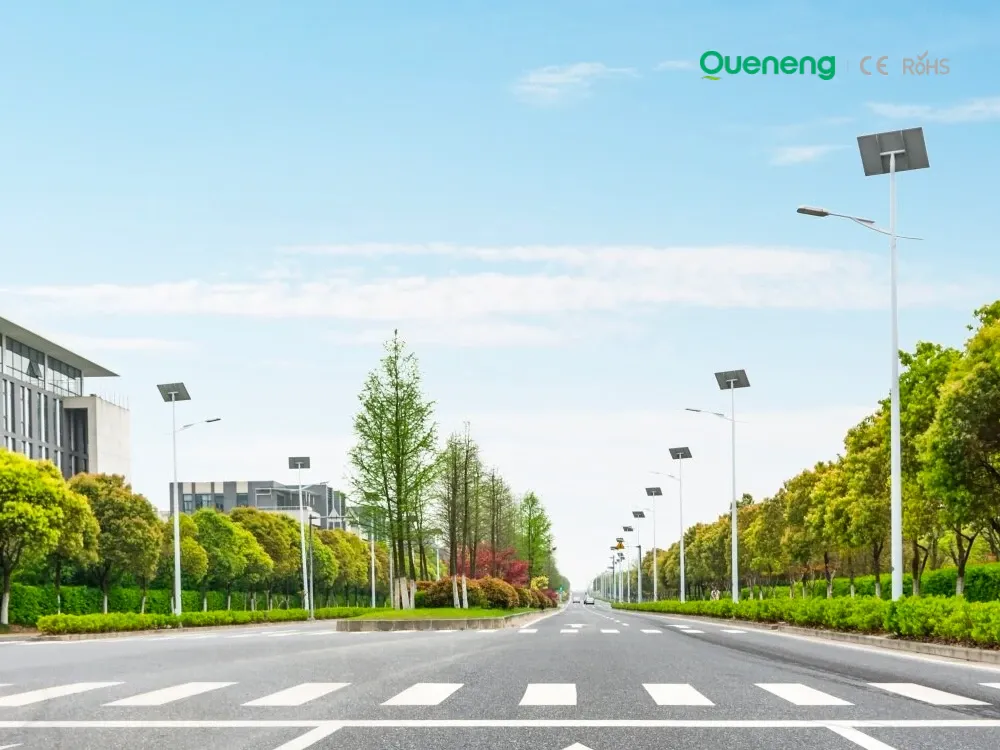
In recent years, the purchase of solar streetlights for municipalities has become a growing trend across the globe. Local governments are under pressure to reduce public expenditure, promote green energy, and create safer communities. Solar streetlights provide a reliable, cost-effective, and sustainable solution that meets these needs. Queneng Lighting, as a leading solar street lighting manufacturer, has supported multiple municipal projects worldwide with customized and energy-efficient solutions.
FAQ
Solar Street Light Luyi
Are Luyi solar street lights suitable for all outdoor environments?
Yes, Luyi solar street lights are highly versatile and suitable for a wide range of outdoor environments. Whether for urban streets, rural roads, parking lots, parks, or pathways, Luyi lights provide reliable illumination in any setting. Their weatherproof and durable construction makes them ideal for harsh outdoor conditions, including extreme heat, cold, rain, and snow.
Public Gardens and Landscape Lighting
What are the benefits of using solar lighting in public gardens and landscapes?
Solar lighting is cost-effective, eco-friendly, and energy-efficient. It helps reduce energy consumption, minimizes carbon footprints, and provides long-lasting illumination without the need for electricity from the grid. Additionally, it requires minimal maintenance and offers flexibility in installation.
Remote Areas Rural Development
What is the maintenance requirement for solar lighting in rural areas?
Minimal maintenance is needed, primarily involving occasional cleaning of solar panels and checking battery performance.
Industry
Does Queneng offer off-grid solar systems?
Yes, we provide off-grid solar lighting systems designed for remote areas or regions without grid coverage, meeting the specific lighting needs in these areas.
Municipal and Public Infrastructure
Are your solar streetlights compliant with international standards?
Yes, our products meet international quality and safety standards, including ISO9001, CE, and RoHS certifications, ensuring reliability and performance.
Solar Street Light Luqing
What kind of battery is used in Luqing solar street lights?
Luqing solar street lights typically use lithium-ion batteries, known for their efficiency, long life, and ability to handle high numbers of charge cycles compared to other battery types like lead-acid.


Queneng's Luzhou Solar Street Light provides sustainable, energy-efficient outdoor LED lighting. Powered by solar energy, it's a cost-effective and eco-friendly solution for illuminating streets and pathways. A reliable and durable LED solar street light.

Queneng’s Solar Street Lights are designed to provide reliable, energy-efficient lighting for streets, parks, and other outdoor spaces.

Queneng's Luxian Reliable Solar Street Light offers energy-saving LED lighting for outdoor use. This durable, solar-powered street light provides reliable illumination, reducing energy costs and environmental impact. A perfect solution for sustainable outdoor lighting.

The Solar Street Light offers an energy-efficient, eco-friendly solution for illuminating outdoor spaces.

Illuminate your outdoor spaces with the Solar Street Light, a cutting-edge solution combining advanced solar technology and energy-saving LED lighting.
If you would like more information about Queneng solar lighting solutions, please send us a message by filling out the form below. Our professional team will get back to you within 24 hours!
Rest assured that your privacy is important to us, and all information provided will be handled with the utmost confidentiality.
Schedule a Meeting

Book a date and time that is convenient for you and conduct the session in advance.
Have more questions about our products or services?

